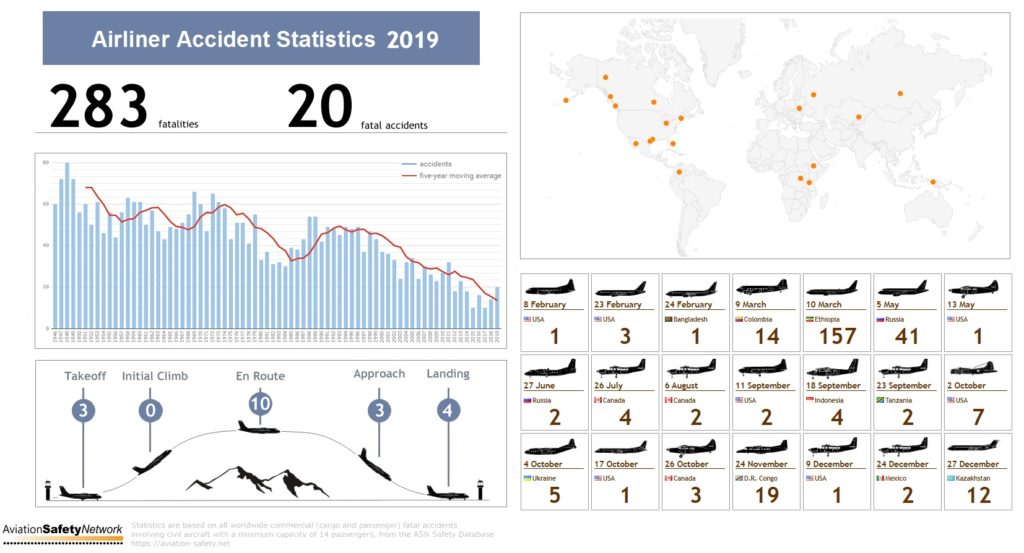IATA’s annual safety report shows that flying is safer than ever

The International Air Transport Association (IATA) has released its annual airline safety report today. It confirms the widely held belief that air travel is getting safer. All the primary safety indicators improved against 2018 figures and against the 2014 – 2018 average. Here’s what the safety report had to say.
The accident rate is decreasing. There were a total of 53 airline accidents in 2019. The accident rate per million flights was 1.13 or one accident every 884,000 flights. In 2018, there were 62 airline accidents; an accident rate of 1.36 per million flights or one accident every 733,00 flights. Between 2014 and 2018, there were 63.2 airline accidents annually; an accident rate of 1.56 per million flights or one accident every 640,000 flights.
The majority of these accidents were not fatal. In 2019, eight of the 53 accidents were fatal. Across those eight fatal accidents, 240 people died. Of those eight fatal accidents, four were jet aircraft and four were turboprops.
2019 was a better year than in 2018. In 2018, there were 11 fatal accidents in which 523 people died. Over the five years between 2014 and 2018, there was an average of 8.2 fatal accidents every year with an average of 303 fatalities annually.
Note that a fatality must occur during an accident. IATA isn’t counting passengers dying of natural causes or illness in-flight.
The third indicator the IATA safety report looked at was hull losses. Again, the figures suggest hull losses are becoming rarer. Dealing first with jet aircraft hull losses, in 2019 the hull loss rate was 0.15 which equaled one loss for every 6.6 million flights. In 2018, the jet aircraft hull loss rate was 0.18, which was one loss for every 5.5 million flights. Across the five year 2014 – 2018 average, the jet aircraft hull loss rate was 0.24, which equaled one loss for every 4.1 million flights.
Turboprop aircraft, the 2019 hull loss rate was 0.69, which equates to one loss for every 1.45 million flights. In 2018, the turboprop hull loss rate was 0.70, equaling one loss for every 1.42 million flights. Over the five year 2014-2018 average, the turboprop hull loss rate was 1.40 or one loss every 714,000 flights.
The accident rate is higher for turboprop aircraft than for jet aircraft.
Alexandre de Juniac, IATA’s Director General and CEO, has an interesting twist on these statistics, He says;
“The release of the 2019 Safety Report is a reminder that even as aviation faces its deepest crisis, we are committed to making aviation even safer. Based on the 2019 fatality risk, on average, a passenger could take a flight every day for 535 years before experiencing an accident with one fatality on board.”
Human life expectancy is 79 years, so you’d have to live through nearly seven lives before you had a really bad flight. In 2018, there were approximately 45 million flights carrying 4.5 billion passengers. So even then, statistically, you have about a 1% chance the fatality will involve you.
If those odds are still a bit too short for you, you can minimize the risks further by being choosy about where you fly. Referring back to hull losses, the global rate in 2019 was 0.15, significantly down on the 0.24 five year 2014 – 2018 average. Some regions had zero hull losses in 2019. Those regions include the Asia Pacific, the Middle East, Europe, and Latin America.
Flying remains one of the safest ways to travel and is getting safer.
